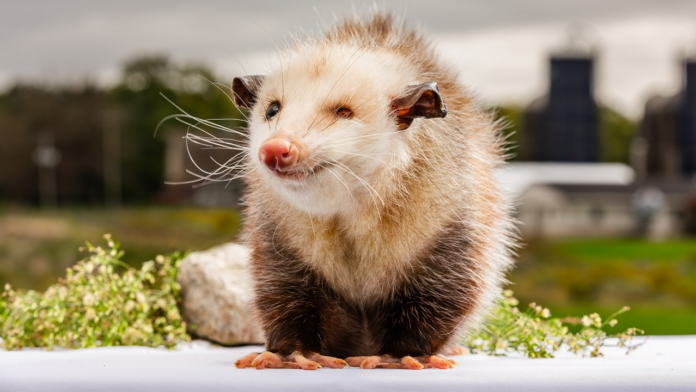CHAMPAIGN, Ill. (WCIA) — As spooky season approaches, certain critters often get a bad rap for being scarier than they truly are. This Halloween, Sydney Oliveira, Program Coordinator at the Wildlife Medical Clinic, and Jacob Dalen, Wildlife Ambassador Care Coordinator, aim to shed light on these misunderstood animals in an enlightening segment featuring their ambassador, Virginia Opossum.
Often seen as aggressive or dirty, the Virginia opossum is anything but. This nocturnal creature is actually quite shy, relying on its impressive ability to “play dead” when threatened. Their hissing and open-mouth display is simply a bluff. Opossums groom themselves frequently and are crucial for maintaining ecological balance. They consume pests like ticks and help manage dead animals in the environment, preventing disease spread. Surprisingly, they are immune to many snake venoms and have a lower body temperature, making them less susceptible to rabies.
Bats are frequently linked to Halloween folklore, particularly with vampire legends. However, out of approximately 1,400 bat species, only three are blood-feeders found in Central and South America. Most bats feast on insects, fruit, and nectar, playing a vital role in pollination and pest control. They are essential for maintaining healthy ecosystems, proving that these flying mammals are more beneficial than terrifying.
Often associated with bad luck and witches, barn owls have a ghostly appearance that fuels their eerie reputation. In reality, these exceptional hunters are critical for controlling rodent populations, which helps mitigate the spread of diseases. Their preference for solitude means they rarely interact with humans, reinforcing their role as silent guardians of our farms and fields.
The common belief that toads give you warts is just a myth. The bumps on a toad’s back secrete mild toxins to deter predators, which has led to their association with witches and potions. Yet, toads are invaluable for controlling insect populations in gardens and serve as indicators of ecosystem health. Their decline can signal environmental issues, making them essential allies in maintaining biodiversity.
This Halloween, as we embrace the spooky season, let’s take a moment to appreciate the wildlife that often gets misconstrued as scary. Opossums, bats, owls, and toads all play significant roles in our ecosystems, and understanding their true nature can help us coexist with these fascinating creatures.




